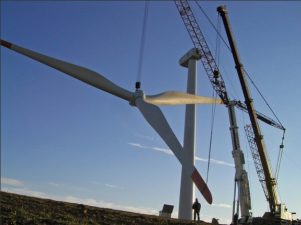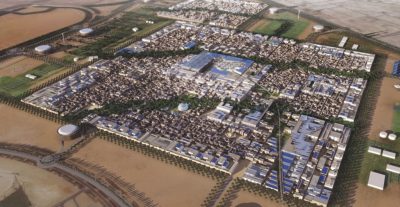 Glass may be beautiful, but in the Middle East, it’s far from eco-friendly
Glass may be beautiful, but in the Middle East, it’s far from eco-friendly
It’s one thing for environmental bloggers to criticize architects or project managers for designing buildings that do nothing to preserve natural resources or inspire beauty in moderation. Foster and Partners, prolific in the Middle East, and just about anything built in Dubai are among such companies and schemes that have elevated our (green) blood pressure in the past.
So it’s deeply refreshing to learn we’re not alone, that architects and environmental planners such as Romi Sebastian, who works in Qatar with the Fortune 500 company AECOM, are also frustrated with architectural practices that defy ecological logic.
Glass facade
Sebastian especially scorns the use of glass facades in the Middle East, where soaring temperatures should dictate a more sensible material.
He reminds us that “glass facades were initially possible only due to the development of powerful cooling systems; otherwise these buildings would have been inhabitable…”
Glass, he says, is designed to trap heat, and acts like a “solar cooker,” and expresses bewilderment that we would build with a material that has this property in a region that should instead deflect as much heat as possible.
Bending nature to (hu)man will
Sebastian claims that architects essentially ignore the environmental constraints imposed upon them, leaving human beings to bend the laws of nature to conform to the will of man. But this is no easy feat, and entails a significant expenditure of natural resources.
The architect and environmental planner also has a penchant for philosophy, and ponders the why behind certain material choices architects and designers make.
I wonder why glass is considered to be a material that symbolises ‘progress’ in the Middle East whereas traditional and practical materials like mud, clay, limestone are often related to concepts of backwardness and poverty. This impractical dissociation between materials and the environmental context of a region causes a slow degradation of the architectural expression prevalent in the Islamic world. Even the local builders often ignore simple concepts of how they can make their lives more comfortable within a living space.
Sebastian suggested to Gulf News that “governments in the region could consider new bylaws to minimise the use of glass for energy conservation purposes,” and that “using thicker stone and concrete walls, for example, and less glass can reduce the thermal signature during the day of a structure…”
Back to our roots
He does not provide exact statistics but draws attention to the idea that even keeping glass buildings and solar panels clean is water, energy, and labor intensive. Additionally, to shelter against this heat trapped by glass buildings, tenants are required to spend extra money to keep the sun out.
None of this makes a lot of sense to Sebastian, who is a fearless, outspoken proponent of more traditional building methods and materials.
“We should go back to our roots,” he says, “stick to our principles of how we used to build in this area.”
:: image via faithful chant
More Architecture News From the Middle East:




Architecture is becoming more and more green, but in my opinion too slowly. Countries in the middle east need to follow the example of Scandinavian countries, and quickly.
Dear laylinn,
Thanks a lot for your support on this literature.
Lets work hard – create good architecture that is comforting, nature respecting and a dependable shelter to our basic needs.
All the very best.
ROMI SEBASTIAN